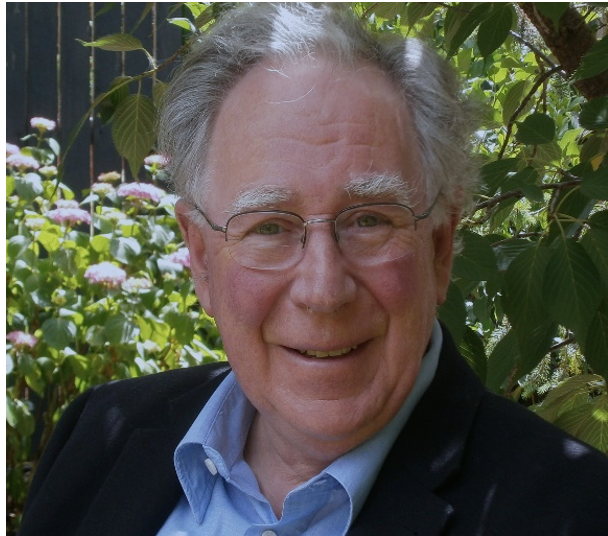Christ's Resurrection in 2022
April 13, 2022
_In the gospels Jesus challenges the religio-political establishment, hostility to him grows, and he is convicted on trumped-up charges and dies as a common criminal on the cross. His life seems over.
_
The resurrection of Christ is a symbol of the victory of life over death. Volodymyr Zelenskyy is a contemporary symbol.
In the last seven weeks we’ve seen hope and extraordinary leadership come literally out of left field in the person of the 44-year-old Ukrainian President, Volodymyr Zelenskyy.Talk about the right man in the right place at the right time, although the ‘place’ is the vicious attack on Ukraine by Putin’s Russians. Here is an extraordinarily brave man who has laid his life on the line and remained in Kiev, knowing he’s a prime Russian target.
Zelenskyy’s courage motivates Ukrainians to risk their own lives and has strengthened their will to resist. His leadership has given his people hope that there is life beyond the death and destruction that currently wracks their country. His approach isn’t ideological, but he has empathy, understanding and the charisma to inspire people. He transcends politics as someone modelling genuine courage.
He personifies something of the leadership that our world desperately needs. He has appeared via video link in many parliaments, including Australia, calling leaders to have the courage to confront the violence we humans so often indulge.
In a contemporary sense Zelenskyy symbolizes the meaning of Easter, the notion of life rising from death. In the gospels Jesus challenges the religio-political establishment, hostility to him grows, and he is convicted on trumped-up charges and dies as a common criminal on the cross. His life seems over.
Given the recent massacres of civilians in Ukraine, Syria, Iraq, Yemen and elsewhere, we can readily identify with innocent people killed. As a priest I always found it easier to talk about the death of Jesus on Good Friday than about his resurrection on Easter Sunday. We know about death; we’ve seen others die and we know that we personally will eventually confront it.
But the Jesus story doesn’t end in death. Mark’s gospel is the primary source of the other resurrection narratives and he has three women the two Marys and Salome going to the tomb to complete the burial rituals. When they get there, the tomb is open and they encounter a young man who says: ‘“Don’t be alarmed; you are looking for Jesus of Nazareth, who was crucified. He has been raised; he is not here.”’ He tells them to tell Peter and the others that Jesus is going ahead of them to Galilee. But, Mark says, the women ‘fled from the tomb, for terror and amazement seized themthey were afraid’ (Mark 16:1-8).
Why? Because life frightens them, just as it frightens us. Distinguished Australian theologian, Rev. Sarah Bachelard, explains: ‘The truth is,_life_can be more threatening than death. We’ve got used to death. Resurrection means giving up the undisturbedness of the tomb for the uncertainty and responsibility of an open future. It means being stripped of the consolations of cynicism and resignation, catapulted into the pain of continued involvement and growth.’
Eventually the women summon-up the courage to tell Peter and the others about the empty tomb. ‘They started risking ridicule and disbelief,’ Bachelard writes, ‘instead of being silenced by death-invested power, and the enervating discourse of “impossibility.” They risked becoming witnesses of resurrection, of God’s inextinguishable life.’
We are so often afraid of life and its challenges. We’d never admit it, but the truth is that many feel safer in the life-denying, destructiveness of a Putin than in the courageous, life-embracing stance of Zelenskyy. We take refuge in the security of the safe humdrum of the known.
Sure, we need regularity and predictability to keep going; otherwise, existence would be impossible. But we also need to move beyond the known and conventional to embrace new challenges if we are to grow, we need to discover new possibilities, to use our imaginations to conceive of and embrace the unknown of new experiences.
For me the Resurrection of Christ is the feast day of the imagination. It says that life can never be extinguished, that there is a fuller life beyond death. ‘Where, O death, is now thy sting?’ as Charles Wesley asks in the hymn ‘Christ the Lord is risen today’. Or, as the Preface for the Mass of Christian Burial says, ‘Life is changed, not ended’ for life is eternal.
To grasp this, we need to activate our imaginations. Imagination is one of those fleeting, intangible realities that the Shorter Oxford Dictionary defines as ’the faculty of fanciful thought.’ While the word ‘fanciful’ appeals, I’d rather describe it as the creative facility that enables us to process experience intuitively to form new images, to perceive the potentiality of things, to discover connections, inferences and affinities, as well as the ability to develop theories which explain interrelationships and patterns.
Genuine imagination is driven by a life-force that is indestructible. Theseus tells Hippolyta in A Midsummer Night’s Dream that lovers and madmen ‘have such seething brainsthat apprehend more than cool reason ever comprehends.’ Then, almost as though remembering his own profession, Shakespeare says:
As imagination bodes forth The forms of things unknown, the poet’s pen Turns them into shapes, and gives to airy nothing A local habitation and a name. (Act 5, scene 1).
Another left-fielder like Zelenskyy is Greta Thunberg. She believes in the future of life as she struggles against climate change to preserve the natural world. Like Thunberg are the eight young Australian students, supported by Sister Bridget Arthur, who claimed in the Federal Court that the environment minister owed them a duty of care when assessing mine proposals; in other words that she owed them life.
They won, but lost on appeal with the judges saying that legally the environment minister didn’t have a duty of care to Australia’s children. In other words, mines are more important than our young people. What an appalling commentary on our legal system and on those who administer it. It was a decision for death over life and the judges who made it need to recognize that. It is precisely the opposite of the meaning of the Resurrection of Christ.

